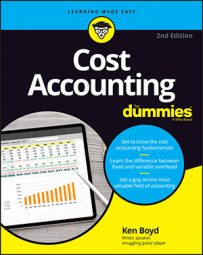As you look at your production results, when cost accounting, you need to distinguish between normal spoilage and abnormal spoilage. Why? Because not all spoilage is created equal.
Normal spoilage occurs even in the best of production environments. No matter how efficiently you work, you still incur normal spoilage. That’s because there are limitations to any production process. For example, if you’re baking 200,000 cookies per day in a continuous baking oven, consistency is vital.
The trouble is that even with the best of ovens, there’s spoilage you can count on. It could be as simple as cookies breaking when they leave the belt, and that situation might be costly to fix. If the vast majority of cookies are coming out fine, the breakage is considered to be normal spoilage.
The matching principle connects your production costs to production revenue. You include the cost of normal spoilage as part of cost of goods manufactured. That makes sense, because some normal spoilage is inevitable. It’s a normal part of the production process.
Because normal spoilage always shows up, you spread the cost over the good units you sell. Good units are those that meet your standards — items that are sellable to a customer.
Abnormal spoilage is spoilage beyond what you normally expect in production. Accountants also define the term as spoilage that wouldn’t happen if you operated efficiently. If you have spoilage you can avoid, you have abnormal spoilage.
As a business owner, you’re probably starting to think about your staff and machinery. Consider just how well your operation is running. If machines aren’t kept in good working order, they won’t operate correctly, and the goods they produce may be defective. These are costs that can be avoided.
Assume again that you’re baking 200,000 cookies per day in a continuous baking oven. You can overbake or underbake if the heat distribution is wrong, or if the wheels and pins in the chain aren’t well lubricated. Some cookies won’t meet the standard. The defective units generate abnormal costs. Some machine problems are unavoidable, but the lack of proper maintenance is avoidable.
If you bake cookies in batches, you cut the dough as precisely as you can, but the dough surrounding the cookies will be left over. Anyway, the excess dough is neither avoidable nor unavoidable spoilage; it’s scrap. “Donut holes” were scrap until someone figured out that they could be a product.
If an employee isn’t properly trained, he or she may make mistakes, and those errors may produce a defective product. For example, an employee who isn’t trained properly to monitor baking oven temperature may cause overbaking or underbaking. That would produce defective units and avoidable (hence, abnormal) costs.
Accountants post the cost of abnormal spoilage to a “loss for abnormal spoilage” account. The loss isn’t related to cost of goods manufactured. Instead, abnormal spoilage is a separate cost that you can’t recover.

